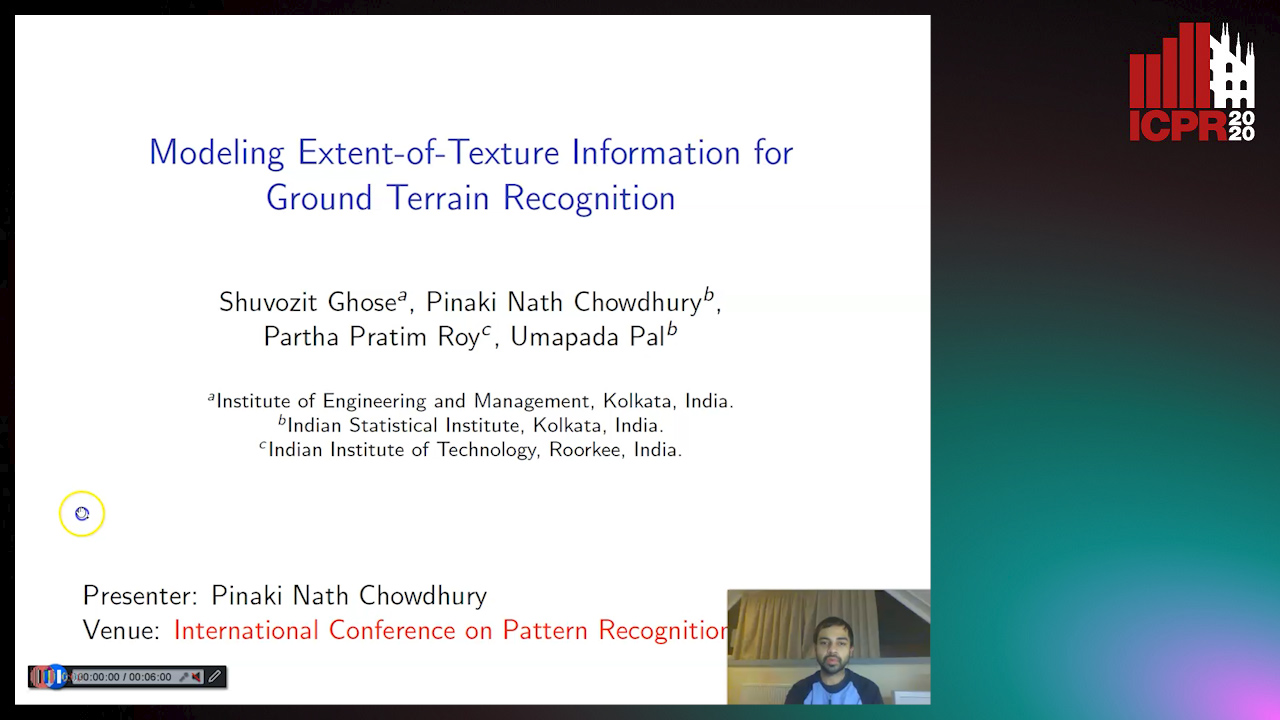Shuvozit Ghose
Papers from this author
Modeling Extent-Of-Texture Information for Ground Terrain Recognition
Shuvozit Ghose, Pinaki Nath Chowdhury, Partha Pratim Roy, Umapada Pal

Auto-TLDR; Extent-of-Texture Guided Inter-domain Message Passing for Ground Terrain Recognition
Abstract Slides Poster Similar
UDBNET: Unsupervised Document Binarization Network Via Adversarial Game
Amandeep Kumar, Shuvozit Ghose, Pinaki Nath Chowdhury, Partha Pratim Roy, Umapada Pal

Auto-TLDR; Three-player Min-max Adversarial Game for Unsupervised Document Binarization
Abstract Slides Poster Similar